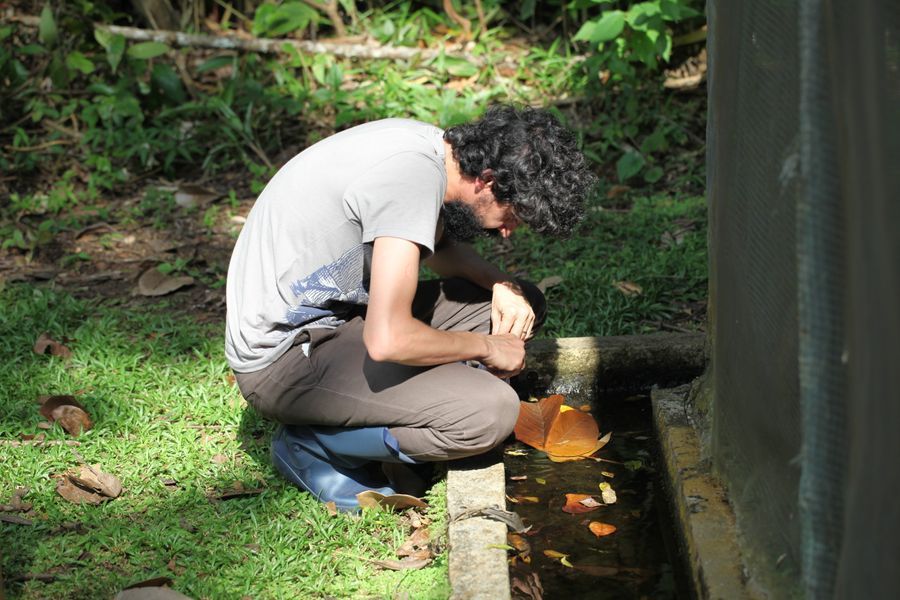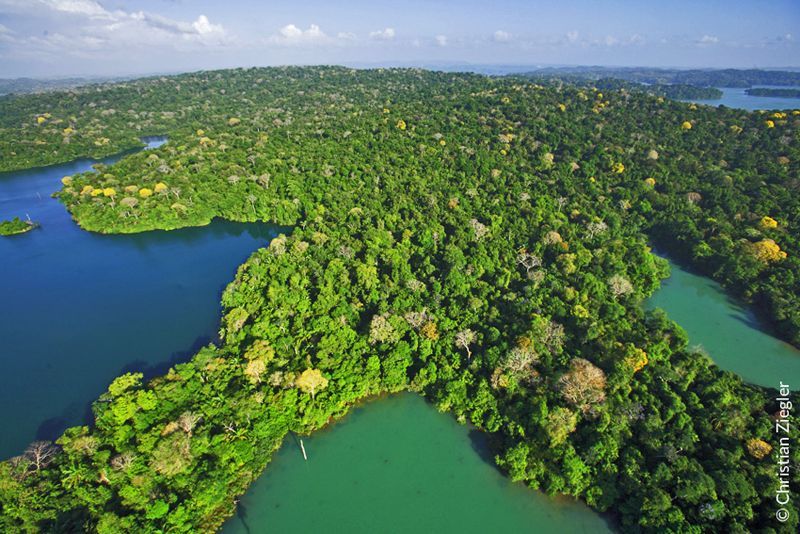How mosquito larvae breathe underwater?
 Jan 14, 2015 • 1:50 AM UTC
Jan 14, 2015 • 1:50 AM UTC Panama
Panama 140x Magnification
140x Magnification Microorganisms
Microorganisms
Manu Prakash
I am a faculty at Stanford and run the Prakash Lab at Department of Bioengineering at Stanford University. Foldscope community is at the heart of our Frugal Science movement - and I can not tell you how proud I am of this community and grassroots movement. Find our work here: http://prakashlab.stanford.edu
266posts
1192comments
42locations

Mosquito’s are world’s most dangerous animals.. I don’t care if this is factually true or not – since Humans might be pretty high up in the list anyway (See Gates note: http://www.gatesnotes.com/Health/Most-Lethal-Animal-Mosquito-Week and the associated debate that lasted weeks in public media). The point is, mosquitoes are dangerous. But again, this is an oversimplification – since almost 3,500 species of mosquitoes are known to exist world wide and only few of them bite humans and a few of these species actually carry diseases that can actually be transmitted to humans. Thus it is important to identify mosquitoes – to know what species are breeding in your area.
Secondly, mosquito’s have specialized larval and pupal stages that need water body to survive/develop. This is highly unusual and also is a bottle neck that is exploited in many control programs. You might remember oil being sprinkled on standing water bodies. But you can ask; why does sprinkling oil kill mosquitoes.
This posts deals with two ideas; (a) Using Foldscope to identify mosquito larval species, so you could tell if you have potential disease carrying mosquitoes breeding in your own backyards. (b) Also, we discuss the physics of how mosquito larvae breathe underwater – this is a biological snorkel.
I was recently in Barro Caolorado Islands in Panama. To get some context; here is a quick movie which talks about the island: http://smithsonianscience.org/2013/04/barro-colorado-island-the-smithsonians-research-outpost-in-the-panama-canal/
The visuals really tell a tale about how dense this forest is:
Secondly, mosquito’s have specialized larval and pupal stages that need water body to survive/develop. This is highly unusual and also is a bottle neck that is exploited in many control programs. You might remember oil being sprinkled on standing water bodies. But you can ask; why does sprinkling oil kill mosquitoes.
This posts deals with two ideas; (a) Using Foldscope to identify mosquito larval species, so you could tell if you have potential disease carrying mosquitoes breeding in your own backyards. (b) Also, we discuss the physics of how mosquito larvae breathe underwater – this is a biological snorkel.
I was recently in Barro Caolorado Islands in Panama. To get some context; here is a quick movie which talks about the island: http://smithsonianscience.org/2013/04/barro-colorado-island-the-smithsonians-research-outpost-in-the-panama-canal/
The visuals really tell a tale about how dense this forest is:

I collected mosquito larva just walking around the forest, and several species just next to houses on the island. I mounted one of the larvae I found in the clogged water on a normal glass slide. I carefully put a cover slip – so as not to squash the larvae. I collected this movie (see below) of one of the mosquito larvae that I was also able to identify. This seems most likely to be a “ Culex declarator ” – the giveaway for the species were pectan teeth on the siphon at the rear end of the larvae. The siphon is long and is used to actual tether to the fluid interface so that the larvae can have access to oxygen from the atmosphere. You can also watch the gills at the very end of the body. I also found a fascinating surprise, which is another micro-organism that is associated with the larval body. Watch my next post exclusively on this relationship; and what’s so special about the second organism that lives in association with the mosquito larvae. It’s a beautifully designed “artificial snorkeling” system, since every time the larvae are scared – they jump inside the water and come back and tether again.
Here is a video that summarizes the common parts. What’s wonderful is the fact that the larvae are almost transparent – so I can image all the tracheal structures inside the larvae as well. I am curious – what the triangular structure right in the center of the head is.
Here is a video that summarizes the common parts. What’s wonderful is the fact that the larvae are almost transparent – so I can image all the tracheal structures inside the larvae as well. I am curious – what the triangular structure right in the center of the head is.
It’s really fun to do imaging in the field. Find a pond near your house, and identify what species of mosquitoes are breeding close to you. This is crucial information in vector control and mapping – and will help local communities understand risks of diseases that are transmitted by mosquitoes. Share even if you can not identify your local mosquito species – we will try to collectively identify the same!!
Cheers
Manu
References:
1. Mosquito identification guide: http://fmel.ifas.ufl.edu/
2. Culex declartor – http://fmel.ifas.ufl.edu/key/genus/culex_decl.shtml
3. Mosquito Taxonomic Inventory: http://mosquito-taxonomic-inventory.info/
Cheers
Manu
References:
1. Mosquito identification guide: http://fmel.ifas.ufl.edu/
2. Culex declartor – http://fmel.ifas.ufl.edu/key/genus/culex_decl.shtml
3. Mosquito Taxonomic Inventory: http://mosquito-taxonomic-inventory.info/
Sign in to commentNobody has commented yet... Share your thoughts with the author and start the discussion!

 0 Applause
0 Applause 0 Comments
0 Comments
















